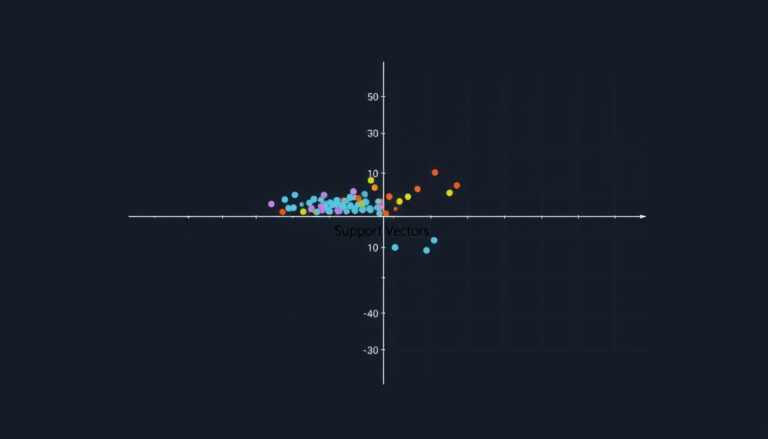How Can Data Preprocessing Affect Machine Learning Model Outcomes?
Data preprocessing is key in Artificial Intelligence and Machine Learning. It makes data clean and ready for analysis. This step is crucial for getting accurate and reliable models.
Techniques like handling missing values and scaling data are important. They help models perform better. These steps also make models more robust against noise and outliers.
Good data preprocessing is vital for making accurate Machine Learning models. By mastering these techniques, we can improve our models. This leads to better results in the fast-changing world of Artificial Intelligence.
Understanding Data Preprocessing Fundamentals
In the world of Deep Learning, Data Mining, and Feature Integration, data preprocessing is key. It turns raw data into something ready for analysis and modeling. This step is crucial for your model’s success.
Role of Data Cleaning and Integration
Data Cleaning fixes issues like missing values and duplicates. It uses methods like imputation and Winsorization. This makes the data clean and ready for more steps.
Data Integration combines data from different sources. It makes sure the data is consistent. This is important for a complete view of the problem.
Impact on Model Performance and Accuracy
The quality of data preprocessing affects your model’s performance. Good cleaning and integration reduce bias and improve accuracy. They also help models learn faster.
Common Preprocessing Challenges
- Handling high-dimensional data can cause overfitting and make things harder to compute.
- Fixing data inconsistencies from different sources is a big challenge.
- Finding the right balance between data quality and quantity is hard.
Beating these challenges is vital for making accurate models. Spending time on data preprocessing unlocks your data’s full potential. It leads to valuable insights.

Feature Engineering and Selection Methods
In machine learning, feature engineering is key to better model performance. It involves making new features and cutting down dataset size. This makes data easier to work with and helps models find important insights. Tools like Principal Component Analysis (PCA) and t-Distributed Stochastic Neighbor Embedding (t-SNE) are great for dimensionality reduction. They help find the most important features and simplify datasets.
Feature selection methods fall into three main categories: filter methods (statistical), wrapper methods (algorithm-based), and embedded methods (within model training). These aim to find the most relevant features. They make models simpler, better performing, and easier to understand. Good feature engineering and selection are vital for model success.
| Feature Selection Method | Description |
|---|---|
| Filter Methods | Use statistical metrics, such as correlation, mutual information, or chi-square, to evaluate and rank features based on their relevance. |
| Wrapper Methods | Iteratively evaluate feature subsets using a specific machine learning algorithm, and select the most informative features based on the model’s performance. |
| Embedded Methods | Incorporate feature selection within the model-training process, allowing the model to automatically identify and select the most relevant features. |
Data scientists can greatly improve their machine learning models by using these techniques. This leads to more accurate and efficient predictions. The right feature selection and transformation are crucial for a project’s success.

Machine Learning Data Transformation Techniques
In machine learning, data transformation is key to model success. It deals with missing values and imbalanced datasets. These steps prepare data for algorithms to find valuable insights.
Let’s look at some important data transformation methods for machine learning projects.
Normalization and Scaling Approaches
Techniques like min-max scaling and Z-score normalization are vital. They are used by Neural Networks and Support Vector Machines. These methods scale features to a common range, making all variables equal in the learning process.
Handling Categorical Variables
For non-numeric data, one-hot encoding, label encoding, and dummy encoding are used. They convert categorical variables into a format algorithms can understand. This lets the model learn from both numbers and categories.
Managing Imbalanced Datasets
Imbalanced datasets are a challenge. Techniques like oversampling, undersampling, or hybrid approaches help. Class weighting also adjusts the importance of minority classes during training.
These methods ensure all features are equally important. They prevent bias towards the majority class. This boosts the Natural Language Processing, Computer Vision, and Data Transformation abilities of machine learning systems.
Preprocessing Strategies for Different Data Types
Effective Predictive Analytics and Unsupervised Learning need high-quality, well-prepared Data Types. Each type needs its own approach to get the best out of machine learning models. This ensures accurate predictions in many areas.
For numerical data, we handle missing values, scale, and find outliers. We use imputation, Min-Max scaling, and Z-score normalization. These steps make data uniform and help models work better.
Missing values get filled with mean or median. Outliers are found using Z-score or IQR. This makes data ready for analysis.
With categorical data, we use encoding to turn non-numerical data into numbers. One-hot encoding and label encoding are common methods. They keep the data’s original meaning for machine learning.
- Tokenization breaks down text into tokens for analysis.
- Removing stopwords makes analysis more efficient by removing common words.
- Stemming and lemmatization reduce words to their base form. This helps in tasks like text classification.
For image data, we resize, normalize, and augment. These steps make sure images are the same size and have the right pixel values. This is key for tasks like object detection.
| Data Type | Preprocessing Strategies |
|---|---|
| Numerical | Missing value imputation, Scaling (Min-Max, Z-score), Outlier detection |
| Categorical | One-hot encoding, Label encoding, Dummy encoding |
| Textual | Tokenization, Stopword removal, Stemming/Lemmatization, TF-IDF vectorization |
| Image | Resizing, Normalization, Data augmentation |
By customizing preprocessing for each Data Type, we can get the most out of our data. This leads to better Predictive Analytics and Unsupervised Learning models.
Conclusion
Data preprocessing is key in supervised learning and the machine learning pipeline. It greatly affects how well predictive models work. By fixing issues like missing values and outliers, we get better data for training.
This leads to more accurate and reliable models. These models can make better predictions and help in decision-making.
By cleaning and transforming data well, we can use our data to its fullest. This makes data-driven solutions more effective in many areas. Good data preprocessing is essential for building strong machine learning models.
These models give us valuable insights and help us make better choices. As data gets bigger and more complex, knowing how to preprocess it is more important than ever.
Data scientists and machine learning experts need to focus on data quality. This ensures their models work as well as they can. By doing this, companies can use supervised learning to reach their goals and make a real difference.







